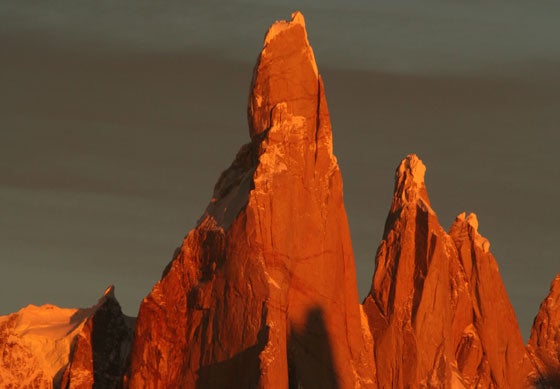╠§

Last Monday, Jason Kruk and Hayden Kennedy made the first fair-means ascent of the Compressor on Cerro Torre's southeast ridge, a controversial climb dominated by a massive, 400-bolt ladder up a blank face. On the way down, they , chopping hundreds on the headwall and the pitches below.
As word spread of Kennedy and Kruk's actions, the pair faced an immediate backlash. Police detained the two climbers and confiscated 102 bolts from them. A mob of irate locals showed up at their cabin in the nearby town of El Chalt├Еn, papering the windows with posters bearing slogans like “Out of El Chalt├Еn” and “Jason and Hayden Go Home!”
“We didn't expect all this, and we didn't expect that we were going to end up at the police station,” Kennedy told El Chalt├Еn's news site. “All the same, when we made the decision to chop the bolts, Jason and I had to be ready to face the consequences.”
Predictably, the news has sparked a debate. On one side are climbers like Patagonia local Rolando Garibotti, who has called the route a “disfigurement” and praised its removal as a return to a more natural state for the mountain. On the other are those like author Gregory Crouch, who argued in a blog post that climbers should have had the opportunity to decide the route's future as a community. “In my mind, a great piece of history has been taken from us, and we are the poorer for its loss,” he wrote.
I can't call myself an expert on Patagonian climbing. But I lean towards agreeing with Garibotti, for a few reasons. The idea that we always have to respect the first ascensionist's styleРђћno matter how destructive or thoughtless it might beРђћseems outdated nowadays, a relic of an era when people climbed mountains primarily to plant flags on top of them. Kruk and Kennedy's route goes at 5.11 A2, a grade that's easily within reach for experienced climbers.
Most important, the Compressor Route was outmoded the minute it went up. In 1970, when Cesare Maestri drilled his way up the side of Cerro Torre, bolt ladders and siege tactics were already on their way out. Royal Robbins had already made some of Yosemite's first clean ascents, and Reinhold Messner was starting his campaign to climb the eight-thousanders “by fair means.” Unlike Warren Harding, who employed similar tactics on the first ascent of The Nose, or John Otto, who chopped steps to the top of Colorado's Independence Monument in 1911, Maestri went against the ethics of the day when he manufactured his route. It seems unusual that it would be any more worthy of preservation 40 years later.
What do you think? Should the Compressor have been chopped?
РђћAdam Roy